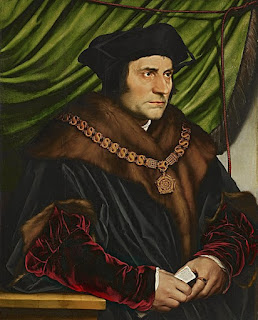Holbein: Capturing Character
is the first major exhibition dedicated to the artist in the United States. Spanning Holbein’s entire career, it starts with his early years in Basel, where Holbein was active in the book trade and created iconic portraits of the great humanist scholar Erasmus of Rotterdam (1466–1536). Holbein stayed in England in 1526–1528 and moved there permanently in 1532, quickly becoming the most sought-after artist among the nobles, courtiers, and foreign merchants of the Hanseatic League. In addition to showcasing Holbein’s renowned drawn and painted likenesses of these sitters, the exhibition highlights the artist’s activities as a designer of prints, printed books, personal devices (emblems accompanied by mottos), and jewels. This varied presentation reveals the artist’s wide-ranging contributions to the practice of personal definition in the Renaissance. Works by Holbein’s famed contemporaries, such as Jan Gossaert (ca. 1478–1532) and Quentin Metsys (1466–1530), and a display of intricate period jewelry and book bindings offer further insights into new cultural interests in the representation of individual identity, and highlight the visual splendor of the art and culture of the time.
You may explore the exhibition online
here.
Of course, one of the featured portraits is on loan from the Frick Collection: Holbein's painting of Saint Thomas More:
This is the canonical portrait of one of the key figures in sixteenth-century England. More is depicted in a three-quarter view, similar to Holbein’s favored pose for Erasmus. The man’s imposing form fills nearly the entire panel. The fairly dark palette of More’s fur-lined velvet robe and the green drapery behind him heighten the focus on the sitter’s face and intent gaze. The astonishing realism of Holbein’s portrayal extends to More’s salt-and-pepper whiskers.

No comments:
Post a Comment